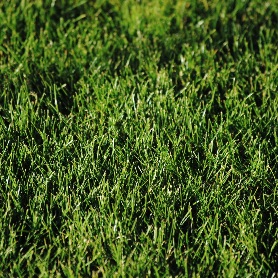How To Care For Your Lawn
A perfectly manicured lawn is a wonderful way to show off your gardening prowess! After spending all that time and effort making your flower beds look amazing, the last thing you'll want is for your grass to let you down.
We've got everything you'll need to know to curate a flourishing lawn, from mowing habits, to making sure that your soil is healthy.
Mowing
Perhaps the first thing that comes to mind when you think of lawns, is mowing them. This will vary as the grass will grow faster or slower depending on the time of year, or because of other factors such as rain or drought.
Make sure that your mower blades are sharp, so as to cut the grass effectively. A dull blade will only damage the grass blades, which will give the overall lawn a brownish hue. When the mower blades show sign of wear, sharpen or replace them to ensure that your lawn will stay well manicured. If after mowing the grass looks frayed or shredded, you will probably need to replace the mower blades.
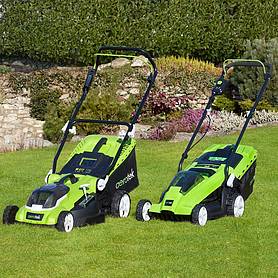
In the spring, the grass will start to grow; try to cut the grass once a week with your lawn mower. Raise the height of the blades when you first start to mow, and gradually lower it over the next few weeks until the grass is being cut to about 2½ cm in length. It is generally better to leave the grass longer rather than shorter; cutting your lawn too short will damage it, and could encourage weeds to take root.
Longer grass will be able to withstand periods of drought better in the summer. Mowing frequently will encourage the grass to grow thicker, and encourage roots to spread, which in turn will help to prevent weeds. Shady lawns will benefit from longer grass too, and will make them less susceptible to moss and bare patches.
When To Mow
It's best to mow your lawn when it's dry; wet clippings are hard for the lawn mower to pick up, and you could be left with grass-clumps all over your lawn. If the mower isn't cutting the edges properly, finish it off with a pair of shears. To help make this particular job easier, adding some lawn edging will help to keep the grass out of your flower beds.
Cutting grass during hot periods can cause distress to your lawn. Leaving the grass longer during dry, hot conditions will help it to trap more moisture, and will mean it's less likely to fall prey to drought. If you've noticed that your lawn isn't growing much during these hot days, it's best not to cut it at all.
As the temperature drops, the rate at which the grass grows will slow down. It's best to start heightening the blades on your mower as winter approaches so as to not damage the grass in the colder months. You won't need to mow as frequently towards the tail end of autumn, and in winter it's best to try and mow as little as possible. If you do mow during the winter months, ensure that you're cutting the grass at a higher height than in the summer. You should avoid mowing while the grass is frosty, as you will damage the grass blades and leave marks where you've been with the mower.
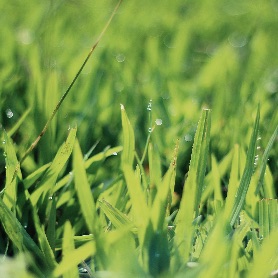
Watering
Like any living plant, your grass will need regular watering in order to grow properly. The best time to water your lawn will depend upon humidity and temperature; you'll know the grass needs a good drink when the blades start to show a blue-greyish tint, or the edges start to wilt and curl. A new lawn will need to be watered regularly, to ensure that the seeds germinate, or that the turf "takes".
It's best to water in the morning, as the sun will help the lawn dry throughout the day. A light drizzle of water won't do the job - you'll need to give it a proper soaking so that the moisture permeates the soil. Watering at the start of the day during cooler temperatures will yield better results. Nighttime watering will keep the grass blades wetter for longer, which could cause unwanted diseases. If you water less often, but for a longer amount of time, the grass will thank you for it.
If you live in an area with a hose pipe ban during periods of heat, not to worry - while the grass may be brown during those hotter months, it will bounce back to its luscious green self once the rain returns. Clay soils may make watering a little tricky, in which case aeration will be the key to giving your grass all the liquid it needs to stay healthy.
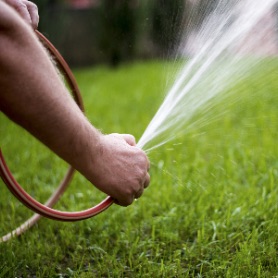
Aeration
With clay soils, it's all too easy for the dirt to become compacted from use throughout the year. The roots need air to be able to grow properly, so it's important to ensure that your soil is aerated in spring and autumn. If your lawn squelches under foot, then you likely have drainage issues. If left untreated, the essential nutrients that the grass needs to grow will be washed out of the soil. By aerating the ground, you will allow the excess water to pass through.
You can aerate your soil with a pitchfork, plunging the tines into your soil every 10 cm or so and giving them a gentle wiggle. If the soil is heavy, fill in the holes left by the fork tines with sand to aid with drainage and to prevent the earth from compacting any further.
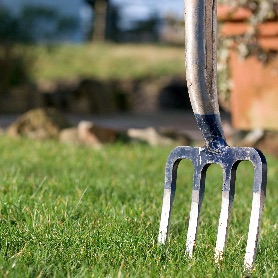
Weed Control
The most effective way to tackle weeds is to deal with them as they sprout; this will prevent any further growth, and they will be easier to get rid of than a more established weed. Most of this weeding can be done by hand. Try to remove as much of the root as possible to stop it growing back, and if the problem is more persistent, consider using a low toxicity herbicide. Smaller weeds can be removed with a scarifier, which will also help to remove any unwanted moss that's made its home in your lawn.
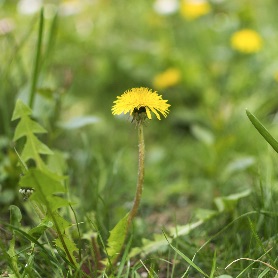
Scarifying
Over the course of time, your lawn can become littered with leafy debris, dead grass, roots, and moss, which in turn can deprive the grass of the sunlight and space that it needs to remain healthy. Scarification is the process by which you can remove all that unwanted matter; this can be done with vigorous raking, either with a spring-tine rake or with an electric lawn raker. Try to keep the lawn free of leaves and debris in general throughout the year, as fallen leaves will trap moisture and encourage disease - investing in a leaf blower will be an easy way to stop them accumulating.
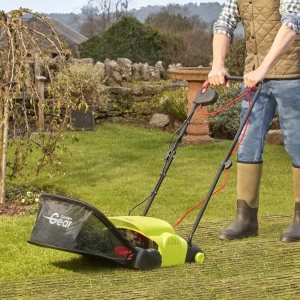
Dealing With The Impact From Animals
Certain animals can have a detrimental affect on your lawn. If you're a dog owner, it will become apparent in the yellow or bare patches spotting the lawn. The nitrogen content of their urine can damage the grass - to prevent this, you can try and train your dog to empty its bladder in one particular spot, or create a gravel area for them to do their business. Failing that, try to water down their urine with a hose to try and lessen the impact on your grass.
While some lawn lovers might curse the appearance of wormcasts in their sea of green, worms are very beneficial to your lawn. The wormcasts are merely an indication of how healthy your lawn is - simply wait for them to dry, then brush them away.
Another blight to lawns is the tunneling mole. It's not easy to repel a mole from your garden, though there are sonic mole repellers you can install in your lawn to try and deter them. One of the best ways to deter them naturally is to mow your lawn regularly, and noisy activities in your garden such as children playing should help keep them at bay. Lethal mole traps are also available, but might not be everyone's cup of tea!
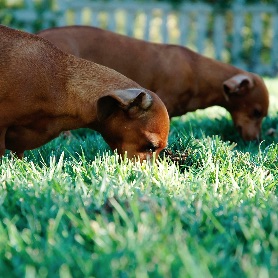
Sign Up For Exclusive Special Offers




© 2024 Thompson & Morgan. All rights reserved. A division of Branded Garden Products Limited.

